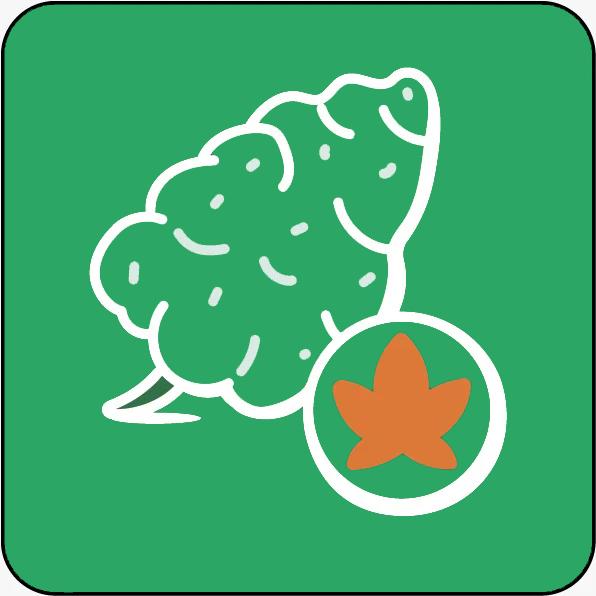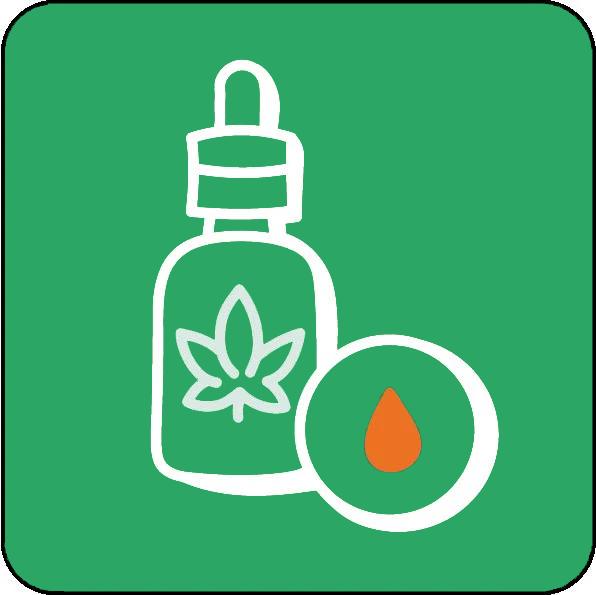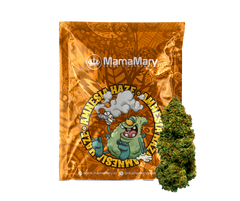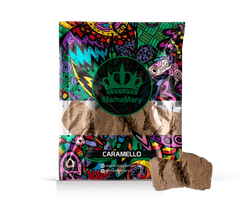Unveiling the Secrets of a New Cannabinoid: What are the Effects of THCJD?

The cannabinoid called THCJD, or tetrahydrocannabinol-gamma-j-delta, is a cannabinoid that has attracted great interest in recent years. With the ever-increasing popularity of cannabis products, it is important to fully understand the effects of THCJD and how it differs from other cannabinoids. So let's see: what is THCJD and what are its effects?
Exploring the Potency and Side Effects of THCJD compared to THC
THCJD, or tetrahydrocannabinol-gamma-j-delta, is a component of cannabis that is attracting more and more attention in the world of cannabinoids. Exploring the differences between the psychoactive cannabinoid THC and THCJD is critical to fully understanding the potency and side effects of these substances.
THC-JD is a cannabinoid naturally present in the Cannabis plant
THCJD is a homologue of the psychoactive cannabinoid THC, presenting similar chemical structure and properties. However, it differs from THC in how long the alkyl chain of its structure is, which gives THCJD greater potency than THC itself.
This cannabinoid is considered a potent component of cannabis, with effects that can vary from person to person. It is important to keep in mind that the effect of THCJD has a very strong potential and therefore it is essential to use it with caution.
The Role of the Carbon Chain
The structure of the cannabinoid THCJD, with its long carbon chain, is what makes it more potent than THC. This chemical structure and similar properties to psychoactive cannabinoids such as THC make it a cannabinoid to take seriously when considering its use as it can induce very strong effects.
Structure of THCJD: How Does It Differ from Other Cannabinoids?
THCJD is a psychoactive cannabinoid that was identified as early as 1941. It is considered a homologue of the cannabinoid THC, but differs from its chemical structure as from that of other cannabinoids such as CBD and THCP which we will now see together.

THC-JD (Tetrahydrocannabinol-Gamma-J-Delta):
THC-JD is characterized by a unique molecular structure, which includes an alkyl side chain of specific length. The structure of THC-JD is similar to that of THC, but the presence of the chain makes it a distinctive and potent cannabinoid.
THCV (Tetrahydrocannabivarin):
THCV is another cannabinoid found in cannabis, with a structure similar to that of THC. However, it is notable for its short alkyl side chain, which can give the compound unique properties and effects. This cannabinoid is known for its ability to reduce appetite and may have different effects than THC on the human psyche and body.
THCP (Propyl Tetrahydrocannabinol)
THCP is a more recently discovered cannabinoid, characterized by a longer alkyl side chain length than THC. This chain gives THCP significantly greater potency, making it one of the most potent cannabinoids identified to date. THCP is the subject of growing interest due to its potential therapeutic efficacy and psychoactive effects.
In summary, THC-JD , THCV , and THCP are three cannabinoids with unique molecular structures that give them distinct properties and effects. While THC-JD is known for its potency and effects, THCV and THCP have unique characteristics related to their structure, which may influence their therapeutic efficacy and effects on the human body.
Differences with CBD
THCJD VS CBD: Unlike THCJD, CBD is not psychoactive and does not produce the same “stoned” effects. Instead, it is often associated with a feeling of calm and relaxation, without causing alterations in consciousness. This makes it a popular choice for those seeking natural relief from anxiety, stress, pain and other ailments without the psychotropic effects.
Molecular Structure of THCJD: The Role of the Side Chain in the Cannabinoid of the Future
The molecular structure of THCJD is characterized by the presence of an alkyl side chain of specific length, which is distinct from the structure of THC and other cannabinoids. This chain gives THCJD its potency and psychoactive properties, making it a particularly interesting component of cannabis for scholars and researchers.
The length of the alkyl chain in THCJD plays a critical role in its interaction with cannabinoid receptors in the human body. This interaction can influence a number of physiological processes, including the regulation of mood, pain, and appetite. Furthermore, the length of the chain can determine the potency of THCJD and its ability to produce psychotropic effects.
One of the most interesting aspects of THCJD's structure is its potential as a basis for the development of new drugs and treatments. The ability to selectively modulate cannabinoid receptors in the human body makes it a promising candidate for a wide range of therapeutic applications, from pain management to anxiety and depression therapy.
Interactions with the Endocannabinoid System and the CB1 and CB2 Receptor

THCJD's interactions with the endocannabinoid system and CB1 and CB2 receptors are critical to understanding its effects and potential impact on human health.
The endocannabinoid system is involved in the regulation of a wide range of physiological functions, including memory, mood, pain sensation, and appetite. CB1 and CB2 receptors are the main receptors of the endocannabinoid system and are found throughout the body, with a particularly high concentration in the central nervous system and immune system, respectively.
THCJD interacts primarily with CB1 receptors in the brain and central nervous system, influencing the transmission of neural signals and producing effects such as euphoria, relaxation and altered sensory perception. This interaction with CB1 receptors is responsible for the effects associated with THCJD and other psychoactive cannabinoids.
Furthermore, THCJD is also able to interact with CB2 receptors present in the immune system, influencing the inflammatory response and immune function. This interaction may have implications for the treatment of inflammatory and autoimmune disorders, although more research is needed to fully understand THCJD's role in immune processes.
Does THCJD Produce Euphoria and Psychoactive Effects?
The effects of THCJD can vary from person to person and depend on a number of factors, including the dose, method of administration and individual sensitivity. However, there are some common effects reported by THCJD users.
Does THCJD Produce Psychoactive Effects?
Some users report a feeling of euphoria and relaxation, similar to that experienced with THC. It is important to underline that THCJD is capable of inducing very strong psychoactive effects, so it is advisable to use it with caution.
Is THCJD Legal? Deciphering the Complex Legislation of New Cannabinoids

In many countries, THCJD may be subject to legal restrictions due to its psychoactive effects and its relationship to THC, the psychoactive ingredient in cannabis. However, because THCJD is a relatively new and little-studied cannabinoid, specific regulations can vary greatly from one jurisdiction to another.
In some places it can only be considered legal if it is present in minimal quantities or if it is extracted from cannabis strains with low THC content. Other countries may completely ban the production, sale, and use of THCJD due to its psychoactive effects and potential for abuse.
It is important that individuals wishing to use or purchase products containing THCJD carefully check local regulations before doing so. We also remember that the best companies always have their products tested by an independent laboratory before offering them to the public.
A Wide Range of THCJD Products: From Cartridges to Distillates
THCJD, an increasingly studied and used cannabinoid, has opened the doors to a wide range of innovative products.
THCJD products have become popular among cannabis users, especially cartridges due to their convenience and ease of use. Vaporizing cannabis is a popular method these days, and you can find a wide range of liquids containing different cannabinoids. These cartridges are designed to be used with vaporizers, allowing users to inhale THCJD quickly and efficiently. The concentration of THCJD in the cartridges can vary, allowing users to choose the product that best suits their needs and preferences.
THCJD distillates are another option available in most countries for consumers who wish to experience this cannabinoid in a concentrated, purified form. The distillates are obtained through extraction and purification processes that allow THCJD to be isolated from other substances present in cannabis, producing a highly concentrated and potent product. These distillates can be used in a variety of ways, including inhalation, ingestion, and topical application, offering users flexibility in their experience with THCJD.
Powerful Effects of Hemp with THC Content Less than 0.5%
The availability of a wide range of THCJD products offers users multiple options to experiment and benefit from this cannabinoid in ways that best suit their needs and preferences, in a legal and transparent manner without exceeding the threshold of THC levels imposed by law.









